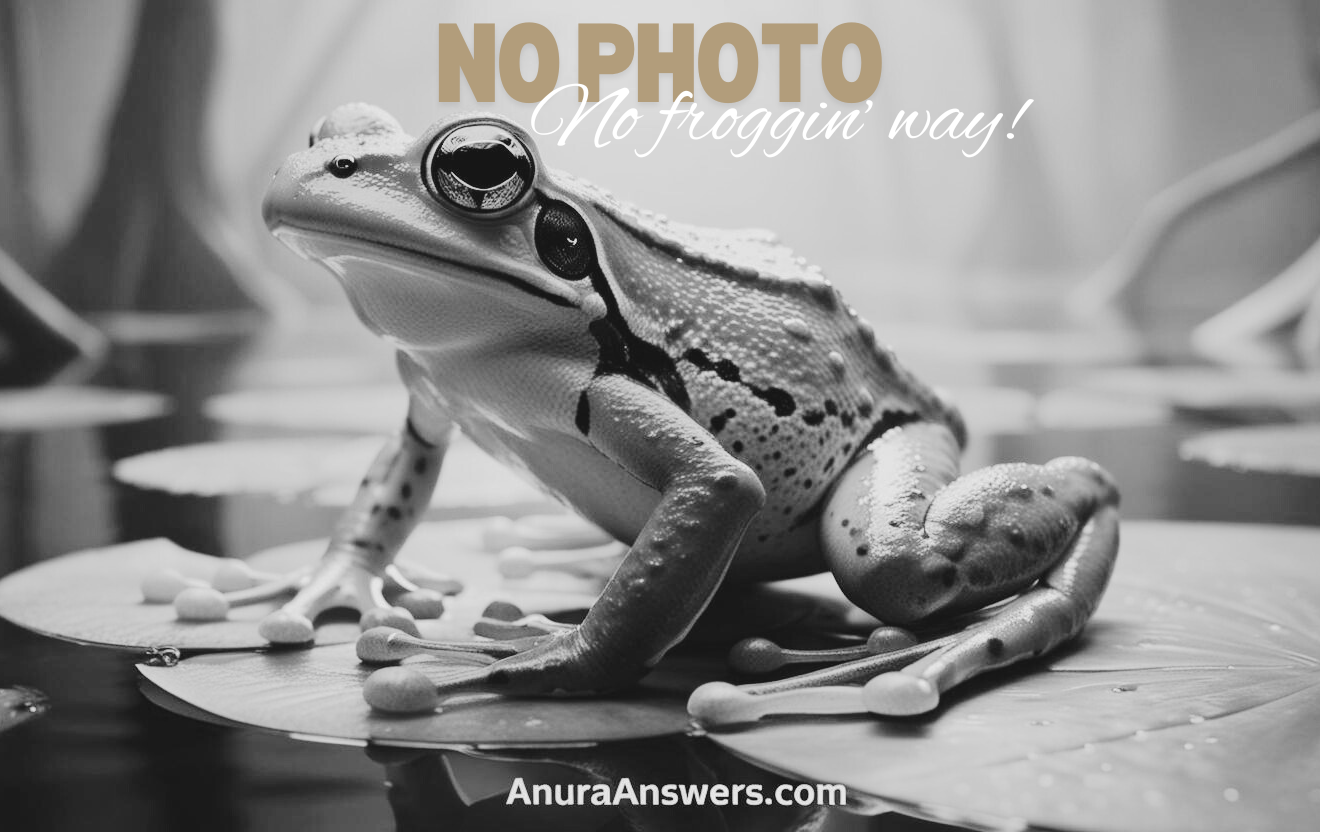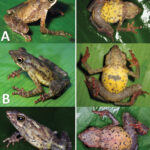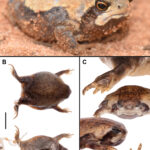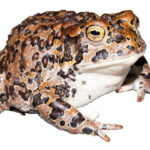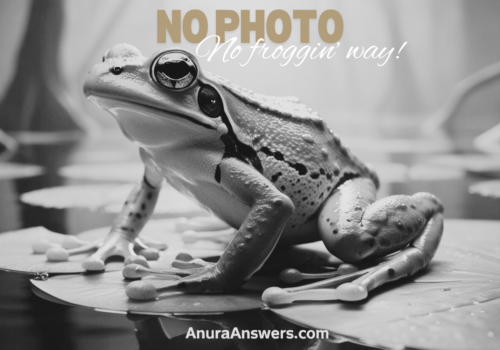- Atelopus halihelos: The Enigmatic Harlequin Frog of Colombia's Hidden Streams
Atelopus halihelos: The Enigmatic Harlequin Frog of Colombia’s Hidden Streams#
In the mist-shrouded mountains and crystal-clear streams of Colombia, a small wonder of nature, Atelopus halihelos, thrives quietly amidst the lush verdure. Known commonly as the Harlequin frog due to its striking colors and contrasting patterns, this species embodies both a spectacular living jewel and a poignant symbol of environmental fragility. Scientifically classified under the family Bufonidae, this amphibian inhabits a world of emerald foliage and cool, gently bubbling streams, quietly playing its part in a delicate symphony of biodiversity.
Despite its charisma, the Harlequin frog remains poorly known—elusive, mysterious, and sadly imperiled. It exemplifies nature’s fragility: breathtaking beauty held precariously in the balance as threats of habitat loss, disease, and climate change loom. What most people don’t know, however, is that these frogs were once regarded by indigenous cultures as harbingers of rains, linked symbolically to fertility and rebirth after heavy storms, reflective of their unique life cycle intertwined tightly with the flowing waters of their natural habitat.
To understand the quiet resilience and ecological importance of Atelopus halihelos, it’s essential to immerse ourselves within its secret world—to experience the vivid landscapes and intricate ecological networks that nurture and sustain its delicate, intriguing existence.
Taxonomy and Classification#
Atelopus halihelos falls under a distinctive genus known widely for their dazzling colors and singular shapes within the family Bufonidae, commonly called true toads. This genus—Atelopus—is affectionately known as “Harlequin frogs,” characterized by brightly colored skins that range from brilliant yellows and striking blacks to stunning greens, oranges, and reds, often displayed in intricate patterns unique to each species. The species Atelopus halihelos was formally described by herpetologists in 2000, marking a significant addition to Colombia’s already impressive amphibian diversity.
Closely related species include the infamous Atelopus zeteki, the Panamanian golden frog, and numerous other South American cousins, each experiencing their own challenges amidst global amphibian declines. Within this broader tapestry, Atelopus halihelos contributes uniquely to understanding evolutionary diversification and survival strategies in rapidly altering habitats.
Natural Habitat#
Geographical Range#
Atelopus halihelos calls the verdant landscapes of the Colombian Andes home, specifically inhabiting select mountainous pockets and stream valleys within the department of Antioquia. Hidden within the cloud forests between elevations of approximately 1200 to 1600 meters above sea level, this species relies heavily upon pristine, swiftly flowing freshwater streams—environments characterized by consistently cool temperatures, high oxygen levels, and minimal human disturbance.
Habitat Preferences and Environmental Interaction#
Picture an undulating landscape blanketed by dense forest canopies, often shrouded in perpetual mist. In this surreal, moisture-laden realm, Atelopus halihelos favors rocky banks adorned with mosses, lichens, and ferns. These cool, humid microhabitats offer refuge and sustenance, their dark dampness shielding frogs from predators and harsh climatic shifts.
Their intimately watery habitat fulfills vital biological requirements: females lay jelly-bound eggs beneath submerged stones and in protected crevices, gently caressed by flowing water crucial for supplying oxygen to the developing embryos. Tadpoles, delicately anchored to stones with sucker-like mouths, scrape algae and biofilm from submerged rocks, contributing subtly yet importantly to nutrient cycling and ecosystem health within stream communities.
Physical Characteristics#
Atelopus halihelos, seldom exceeding 3 to 4 centimeters in length, emphasizes nature’s predilection for captivating miniatures. At first glance small and somewhat delicate, their sharply angular bodies and slender limbs elegantly communicate agility and grace. Their bright and contrasting skin patterns are curious adaptations—enchanting yet unmistakably cautionary—mimicking toxic signaling often displayed among similarly dazzling amphibians.
Their dorsum showcases bold blotches or stripes of startling yellows, oranges, or bright greens juxtaposed dramatically against pitch-black backgrounds. This vibrant attire serves as aposematic coloration, warning potential predators of their distastefulness or toxicity derived primarily from their diet of arthropods rich in defensive alkaloids.
Behavior and Life Cycle#
Feeding Behaviors and Diet#
Harlequin frogs like Atelopus halihelos engage in strategic ambush predation, patiently positioned along mossy stones or leaf litter, scanning their surroundings carefully with bulging, attentive eyes. Prey—mostly small arthropods such as ants, beetles, and mites—are swiftly grasped by their sticky tongues in lightning-fast strikes. These dietary choices provide chemical compounds that foster and replenish their skin’s brilliant pigmentation and inherent chemical defenses.
Breeding and Reproductive Habits#
As gentle rains herald the onset of breeding season, adult males, perched prominently along stream edges, express their fervent readiness through a chorus of melodious yet surprisingly subtle trills and chirps. Attracted by these courtship calls, females carefully select partners whose vocal vigor indicates genetic fitness. Amplexus—the amphibian mating embrace—ensues, often lasting hours, during which females strategically deposit eggs beneath carefully selected submerged rocks and protected crevices.
Fascinatingly, Upon hatching, the uniquely adapted tadpoles attach themselves firmly to underwater surfaces using specialized mouth structures, protected from strong currents yet continually bathed in oxygen-rich water. This adaptation ensures survival within their turbulent aquatic habitats, emphasizing this species’ specialized lifestyle deeply integrated into stream ecology.
Ecological Role#
Atelopus halihelos, though small and unobtrusive, plays a disproportionately influential environmental role within Andean ecosystems, acting simultaneously as prey, predator, and crucial indicator species. Their dietary choices underscore their position as critical regulators of insect population dynamics, subtly maintaining ecological balance.
Conversely, the species provides essential sustenance within the food web, falling prey primarily to snakes, birds, and occasionally mammals hunting along moist forest floors. Their presence, health, and population stability reflect water quality, climatic stability, and broader ecosystem health, marking their significance as robust bioindicators.
Threats and Conservation Status#
Challenges and Decline Factors#
Alarmingly, Atelopus halihelos faces significant existential threats driven primarily by habitat degradation, climate change, and disease. The widespread infectious fungus Batrachochytrium dendrobatidis (commonly known as chytrid), devastating countless amphibian populations globally, represents immediate danger, causing drastic population declines in several closely related species and genera.
Human-driven habitat fragmentation diminishes available pristine stream habitats, while climate change disrupts delicate environmental balances that this species depends on, altering rainfall patterns, temperature stability, and oxygen availability in freshwater habitats. Proactive, science-based restoration and conservation actions stand urgently required to counteract these pressures and preserve habitats.
Conservation Measures and Initiatives#
Conservationists are actively involved in monitoring population trends, mapping habitats, and implementing biosecurity measures to limit chytrid spread. Ex-situ breeding programs and community education efforts now accompany in-situ research, offering hopeful paths forward towards species protection, restoration, and recovery. However, these hopeful attempts urgently require public engagement, governmental support, and sustained research funding to succeed long-term.
Cultural and Scientific Significance#
Beyond biological interest, Atelopus halihelos symbolizes the deeply held cultural connections indigenous communities hold with their natural environment. Traditional local beliefs interpret these bright, enigmatic amphibians as potent symbolic messengers heralding renewal and fertility—nature’s vibrant beacon indicating an ecosystem’s purity and health.
Modern scientific discourse now finds fresh perspectives within traditional insights, thereby affirming indigenous ecological wisdom and inviting deeper cross-cultural conservation collaboration. Scientifically, the Harlequin frogs continue to provide groundbreaking insights into evolutionary ecology, toxicology, chemical defense strategies, and emerging diseases, guiding global amphibian conservation efforts through shared lessons learned at local, intimate scales.
Conclusion: Protecting a Jewel of the Colombian Andes#
Atelopus halihelos, thriving silently along secluded streams swept by mountain clouds, exemplifies nature’s delicate interconnectedness, resplendent ecosystems endangered by escalating environmental threats. Understanding and appreciating this unique frog’s vibrant existence offer more than academic fulfillment—they demand proactive conservation responses and cultural re-engagement with the fundamental rhythms sustaining life on our planet.
The Harlequin frog, with its captivating colors and enigmatic habits, calls us collectively toward greater environmental stewardship. May we heed this gentle yet impassioned plea and act decisively to ensure this fragile amphibian jewel continues to enrich Colombia’s mountainous rivers for generations to come.
